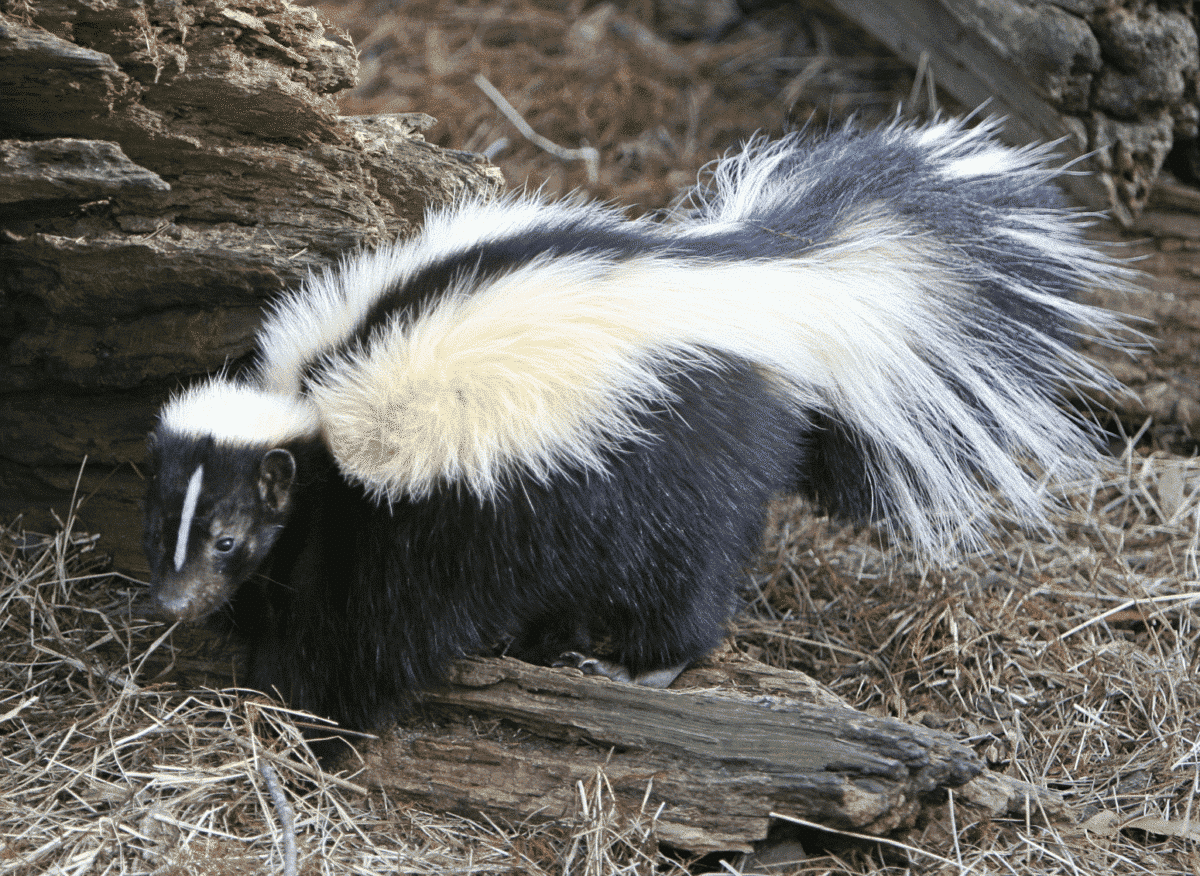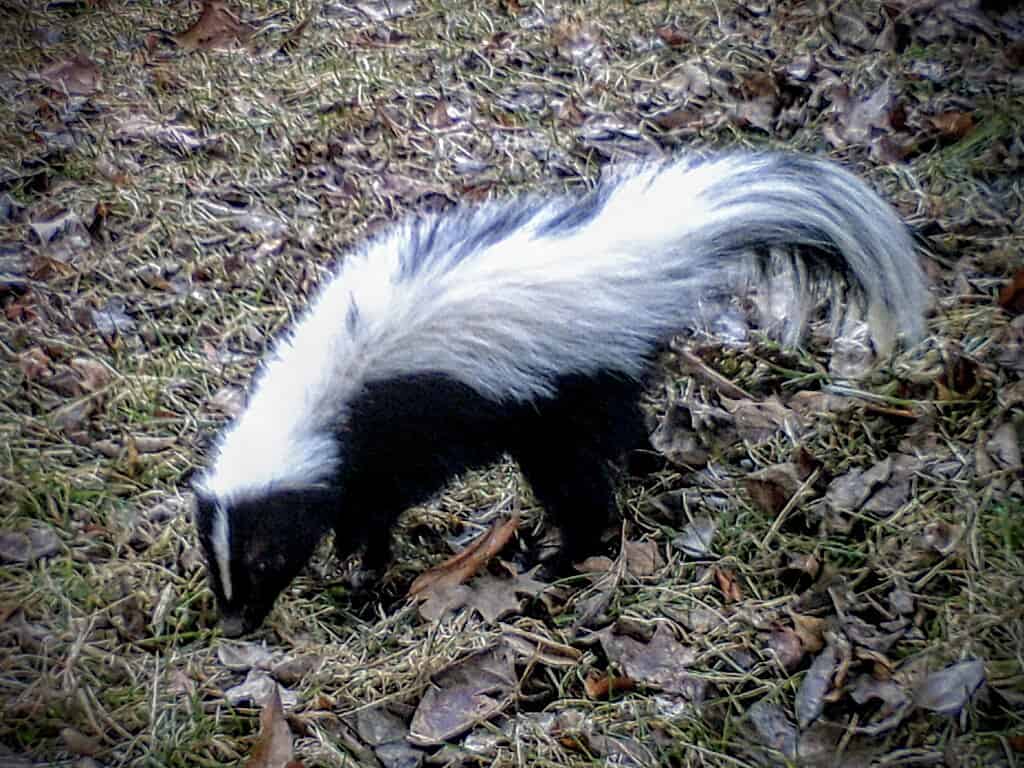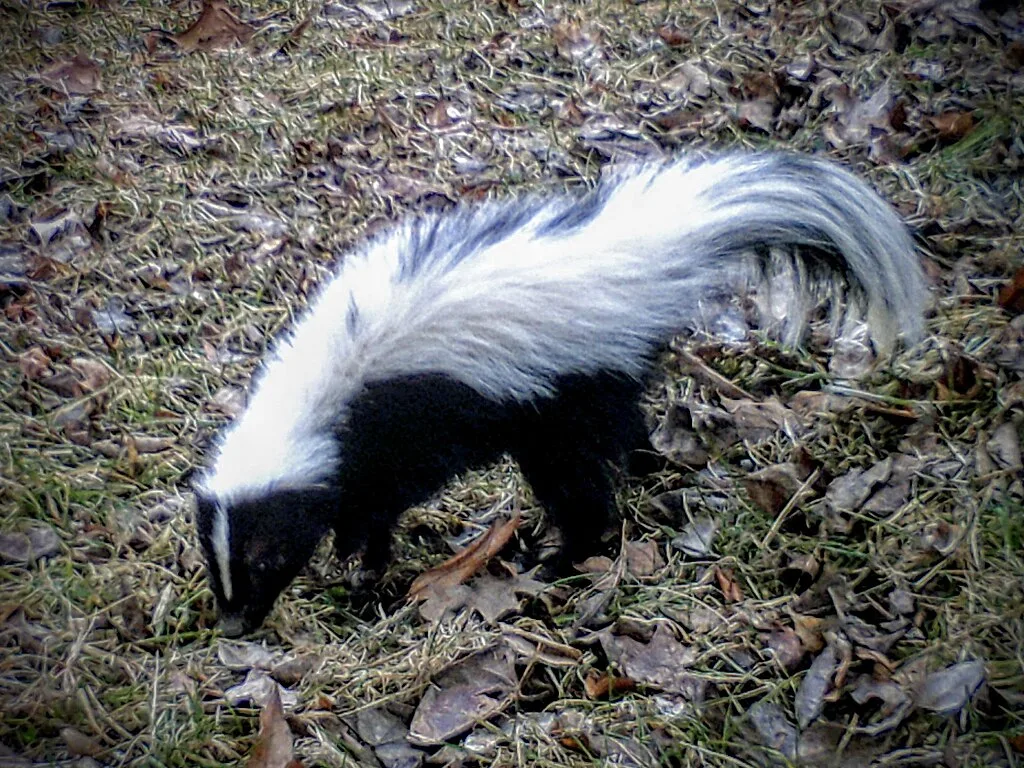The Striped skunk is renowned for its distinctive black and white markings, a natural warning signal of their toxic spray. However, recent studies reveal that these iconic stripes are less pronounced in areas where mammalian predators are sparse. This discovery, made by scientists from the University of Bristol, Montana, and Long Beach, California, opens up intriguing questions about the evolution of warning coloration in animals.

Striped Skunk Color Variations
The fur coloration of skunks shows a remarkable variety across the North American continent, ranging from all-black to various patterns of black and white bands, and even all-white individuals. This variation is not random but correlates with the presence and density of mammalian predators in different regions. The study, published in Evolution, suggests that in environments where skunks face fewer threats from predators, natural selection for the distinctive black and white pelage weakens, leading to a broader array of fur patterns.
Warning Coloration
Warning coloration serves as an antipredator defense mechanism. Typically, a conspicuous signal advertises the prey’s ability to evade predation, often due to traits like toxicity, spines, or aggressiveness. Predators usually have to learn the significance of these signals. It is expected that such warning coloration would be consistent across individuals of the same species to educate predators effectively. However, the variation seen in skunks challenges this notion, indicating that different environmental pressures can lead to diverse advertisement strategies within the same species.
Striped Skunk Research Findings
Researcher Hannah Walker from the University of Montana documented the distribution of these various fur colors across North America using museum specimens. The team analyzed these against a range of variables to understand the drivers behind the color variation. Their findings revealed that skunks exhibit a wider range of fur colors in areas with fewer mammalian predators, even within the same litter. This indicates that the evolutionary pressure for uniform warning signals is relaxed in safer environments.
Read more about this study here.
Influence of Other Predators
While the study primarily focused on mammalian predators, the team also examined the impact of avian predators like owls and raptors. The findings suggested similar effects, though less pronounced. This could be attributed to birds’ poorer sense of smell, making them less responsive to the skunks’ smelly defenses.

Broader Implications and Future Research
The study’s conclusions provide insights into how environmental factors influence evolutionary traits like warning coloration. This knowledge contributes to our broader understanding of evolutionary biology and animal behavior. The research team plans to extend their study to other skunk species in North America, further exploring the evolutionary dynamics of warning signals in different ecological contexts.
What do you think about striped skunks? Leave a comment below.
Thank you for following along with this article – How the skunk got its stripes.
You may also like:
- Watch: Lucky Cyclist Meets Family of Skunks
- What Do Skunks Eat?
- Discover New York City’s Most Dangerous Animals
Join our Forum for free today!

- Shocking Survey Results of only 718 Snow Leopards Identified in India - July 18, 2024
- Do Octopuses Punch Fish For No Reason? - July 5, 2024
- Brave Farm Animals Save Chicken Friend FromHawk - June 30, 2024

